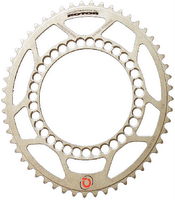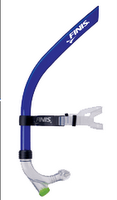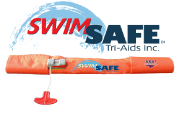Q Rings

Here's another product I like and suggest to the athletes I coach. Let me tell you why.
There are two times in every pedal stroke when moving the cranks in a circular pattern falters and pauses – at the top and bottom. At the top the foot and leg must transition from moving back and up to forward and down. Just the opposite is necessary at the bottom of the stroke. Because of this, tension on the chain goes through big swings and power output is jerky and uneven. So riders who are not very efficient at these two critical points - which is most riders - waste a lot of energy and are often referred to as “mashers.” They drive oversized gears pushing down hard from the 2 o’clock to 4 o’clock positions. On the other hand, “spinners” transition at the top and bottom of the stroke more smoothly and ride with a higher cadence and a more graceful pedal stroke. This makes for a much more economical use of energy.
Learning to smoothly pedal through the top and bottom transition areas can take months of focused training and drills. But I find using Q-Rings made by Rotor Cranks USA accomplishes much smoother top-bottom transitions almost immediately after installation. I recommend these for all of the athletes I coach who are mashers. I’ve seen great improvement in their efficiency right after making the switch.
Q-Rings are oval-shaped chain rings which replace the standard chain rings on your bike. Here’s how they work. When your pedal is at the top and bottom of the stroke the Q-Ring is in the smallest-radius position which means your foot can more easily make the transition. When in the power position at 3 o’clock the radius is at its greatest length which gives you more leverage and therefore more power. For example, a 53-tooth Q-Ring is the equivalent of pedaling a 51 tooth at the top and bottom (fast transitions) and a 56 tooth at 3 o’clock (high power output). If the picture above was rotated 90 degrees you'd get a better idea of what is going on. This would put the shortest radius in the vertical position and the longest in the horizontal position. They are also adjustable so you can change this short-long radius position slightly for time trialing, climbing or riding on flats.
Q-Rings retail for about $200 to $240. www.rotorcranksusa.com



